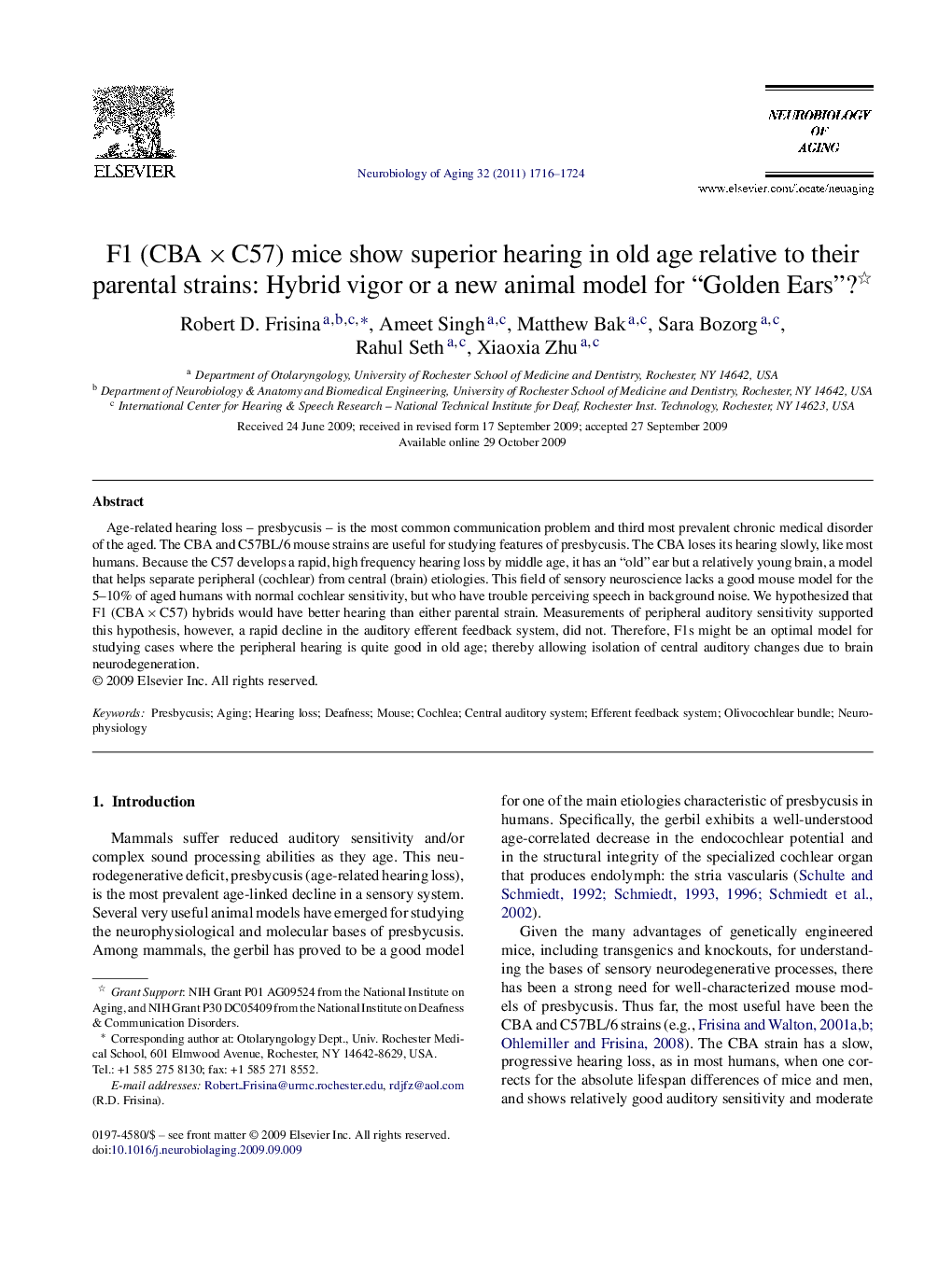| Article ID | Journal | Published Year | Pages | File Type |
|---|---|---|---|---|
| 330181 | Neurobiology of Aging | 2011 | 9 Pages |
Age-related hearing loss – presbycusis – is the most common communication problem and third most prevalent chronic medical disorder of the aged. The CBA and C57BL/6 mouse strains are useful for studying features of presbycusis. The CBA loses its hearing slowly, like most humans. Because the C57 develops a rapid, high frequency hearing loss by middle age, it has an “old” ear but a relatively young brain, a model that helps separate peripheral (cochlear) from central (brain) etiologies. This field of sensory neuroscience lacks a good mouse model for the 5–10% of aged humans with normal cochlear sensitivity, but who have trouble perceiving speech in background noise. We hypothesized that F1 (CBA × C57) hybrids would have better hearing than either parental strain. Measurements of peripheral auditory sensitivity supported this hypothesis, however, a rapid decline in the auditory efferent feedback system, did not. Therefore, F1s might be an optimal model for studying cases where the peripheral hearing is quite good in old age; thereby allowing isolation of central auditory changes due to brain neurodegeneration.
